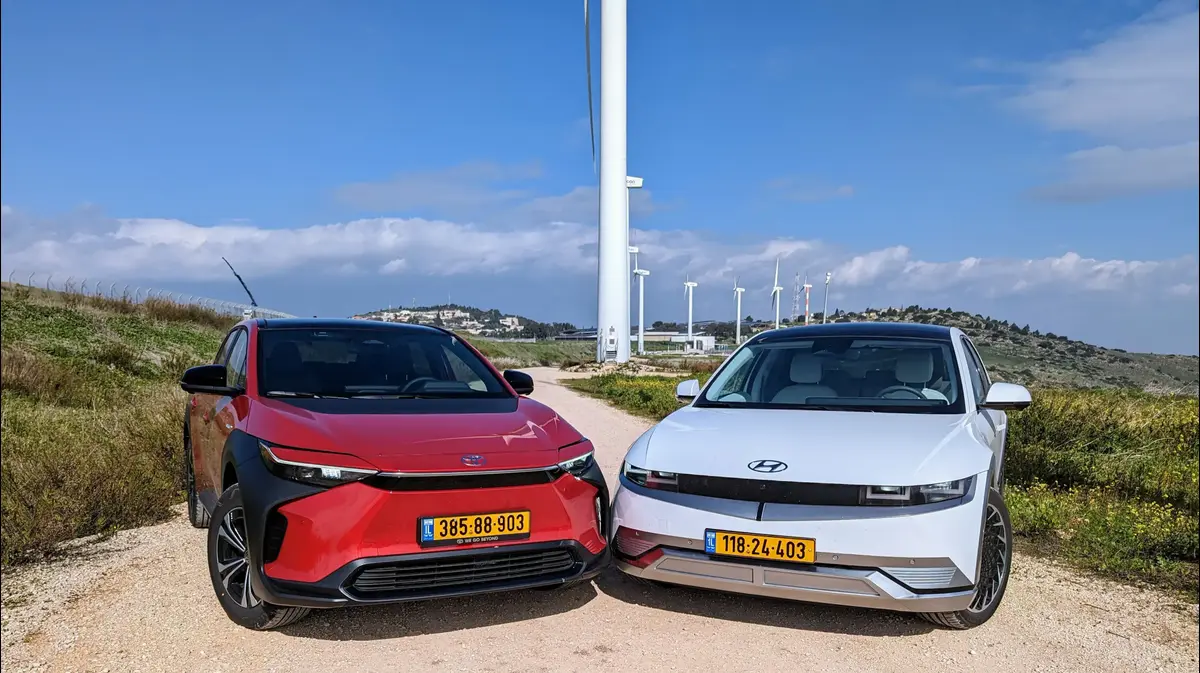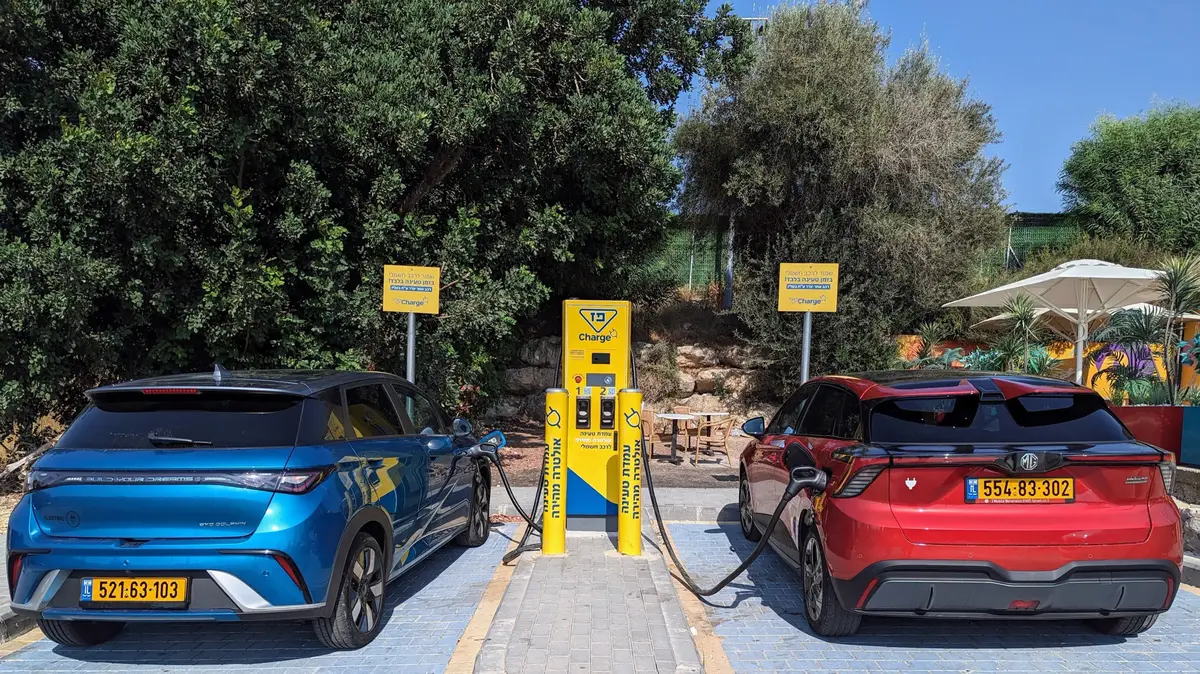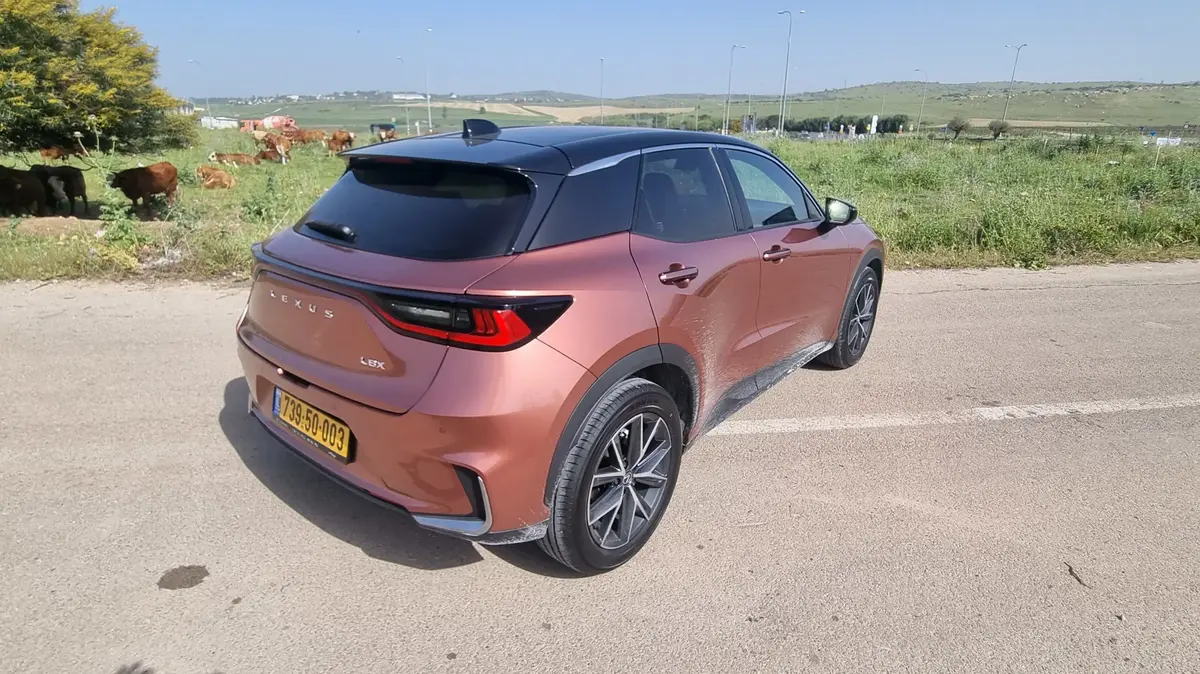The expected changes in green taxation - and how they will affect the car market in Israel
In January 2023, changes in green taxation will come into effect.
How are they expected to affect our pocketbook, the demand for cars and also the price of car insurance?
In collaboration with Phoenix Smart
09/20/2022
Tuesday, September 20, 2022, 12:45 p.m
Share on Facebook
Share on WhatsApp
Share on Twitter
Share by email
Share in general
Comments
Comments
The increase in taxation and the overall increase in the cost of vehicles only illustrate the need for comprehensive vehicle insurance (Photo: ShutterStock)
Our world continues to heat up: just a few years ago the Weizmann Institute published a study according to which the desert strip is expanding to the north.
This expansion may mean that in the not too distant future Tel Aviv will have hot and dry weather like in Beer Sheva - and Beer Sheva will have hot weather like in Mitzpe Ramon.
The desert phenomenon is only one of the consequences of global warming, which is accelerated by the emission of greenhouse gases. The fight against global warming and its consequences includes a series of actions, among them green taxation: taxation that aims to promote environmentally friendly activity through economic incentives. In the coming years, this taxation is expected to change, and affect The pocket of all of us. What is green taxation, and what awaits us in the future?
What does green taxation include today?
In order to encourage the use of less polluting vehicles, the green tax reform was launched in Israel in 2009, with a series of tax benefits: while an 83% purchase tax is levied on a standard drive vehicle, a 50% purchase tax is levied on a hybrid car, a plug-in hybrid car A purchase tax of 40% is imposed, and a vehicle with an electric drive is currently subject to a purchase tax of only 10%.
The ceiling of the purchase tax benefit is currently limited to NIS 75,000 for an electric vehicle and NIS 40,000 for a plug-in hybrid vehicle.
The remaining amount is charged with the maximum purchase tax, which is 83% as stated.
As part of the green taxation, even gasoline vehicles that are subject to the payment of a maximum purchase tax of 83% can receive a tax benefit according to the vehicle's green score.
The green score associates the vehicle with one of 15 levels of pollution depending on the amount of pollutants it emits, with 1 indicating the lowest pollutant emission, which entitles the vehicle to the maximum reduction of NIS 17,000 from the purchase tax.
The principle is simple: the greener the vehicle and the lower the score, the greater the tax reduction.
Determining the level of pollution is calculated using a formula that takes into account the mix of gases emitted from the vehicle, including carbon dioxide, nitrogen oxides and respirable particles.
How is green taxation going to change from January 2023?
The first change: increasing the purchase tax on electric and hybrid cars
In January 2023, the purchase tax on plug-in hybrid cars will rise from 40% to 55%, while the purchase tax on electric vehicles will rise from 10% to 20%.
The gradual increase in the purchase tax will also continue in 2024, when the purchase tax for electric vehicles will rise to a rate of 35% and the purchase tax for plug-in hybrid vehicles will be the same as for regular vehicles, and will be 83%.
Another less talked about change is the reduction of the ceiling of the benefit: as of January 2023, the ceiling of the tax benefit when purchasing an electric vehicle will be reduced from NIS 75,000 to NIS 60,000.
In a plug-in hybrid vehicle, the benefit ceiling will be reduced from NIS 40,000 to NIS 30,000.
In 2024, the benefit ceiling when purchasing an electric vehicle will already be NIS 50,000.
The ceiling of the benefit in a hybrid-charged vehicle will no longer be relevant, since the tax benefit in this category will be canceled and it will stand at 83% as in a normal vehicle.
The second change: changing the pollution degree formula
Once every two years, the tax authority changes the formula that determines what the green score is, and as a result, what level of pollution the vehicle will belong to and what is the amount of the tax benefit it will receive (if any).
For example, changing the level of pollution of a normal vehicle from level 4 to level 8 will lead to the taxation becoming more expensive by thousands of shekels.
The next update of the formula is also expected to take place in January 2023, and lead to a change in the grade of some vehicles and the tax payments they owe.
How are the upcoming changes expected to affect the car market in Israel?
In the short term, i.e. between the years 2022-2023, an acceleration in demand for electric vehicles is expected both due to the growing popularity, and also due to the desire to exhaust the tax benefits before the expected increases.
In the category of normal vehicles, the possible change in the rating of the vehicles and the reduction of the tax rate, may lead to a change in the demand for specific models.
How will the price of car insurance be affected?
The expected changes in vehicle prices are expected to affect vehicle insurance as well: when the cost of the vehicle increases, naturally its maintenance also increases.
A new car that cost NIS 100,000 a year ago has become more expensive by NIS 20,000?
When necessary, for example in case of theft, the insurance should provide coverage that corresponds to the value of the vehicle that has become more expensive, and hence the cost of car insurance is also expected to be more expensive.
To the reasons that led to the increase in the price of car insurance, we should also add the increase in the price of spare parts, among other things due to the disruptions in the supply chain and following the Russia-Ukraine war: when there is a shortage of spare parts and the supply is reduced - prices rise.
As the prices of spare parts increase, the cost of repairs that should be covered by car property insurance in the event of an accident increases.
In addition, the increase in the cost of spare parts is a significant incentive for car thieves, increases the chance of theft and consequently the frequency of car insurance activation.
All of these increase the risk and the costs incurred by the insurance companies, which leads to an increase in car insurance rates.
The increase in taxation and the overall increase in the cost of vehicles only illustrate the need for comprehensive vehicle insurance.
After all, we are all obliged to have compulsory insurance, which provides an answer following bodily injury in the event of an accident.
But what do we do in the event of damage to our vehicle or to a third party's purchase?
In the absence of comprehensive insurance, we are exposed to large damages that can reach hundreds of thousands of shekels and even more.
Now, following the increase in vehicle prices, we may be exposed to more expensive damages than in the past.
The conclusion is clear: especially today, when comparing car insurance prices, it is important to remember to also take out comprehensive insurance that will provide comprehensive protection when needed.
vehicle
car news
Tags
the phoenix









